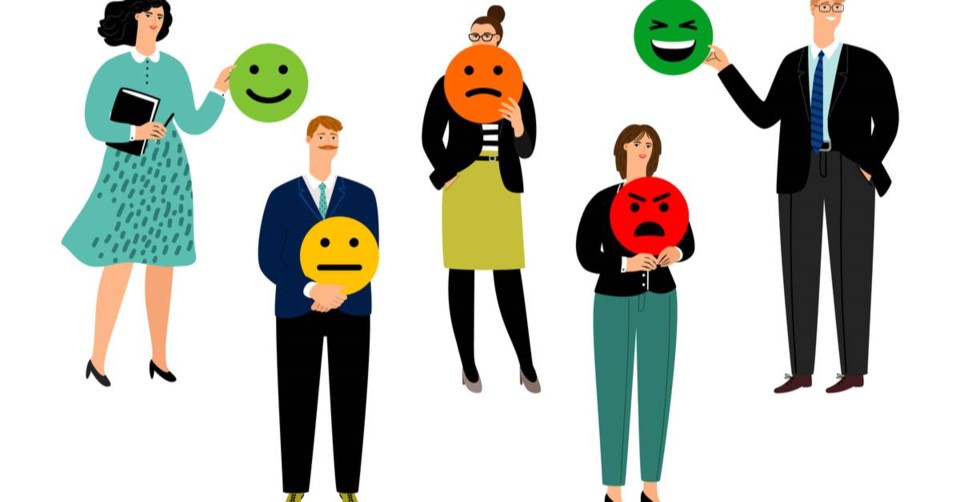With early voting scheduled to begin on June 12 using the new ranked choice voting system, city officials are hurriedly trying to get voters up to speed.
A Thursday forum on the system was part of the city's $15 million voter education campaign, which includes community outreach and investing more than $2 million in producing voter education material in more than 18 languages.
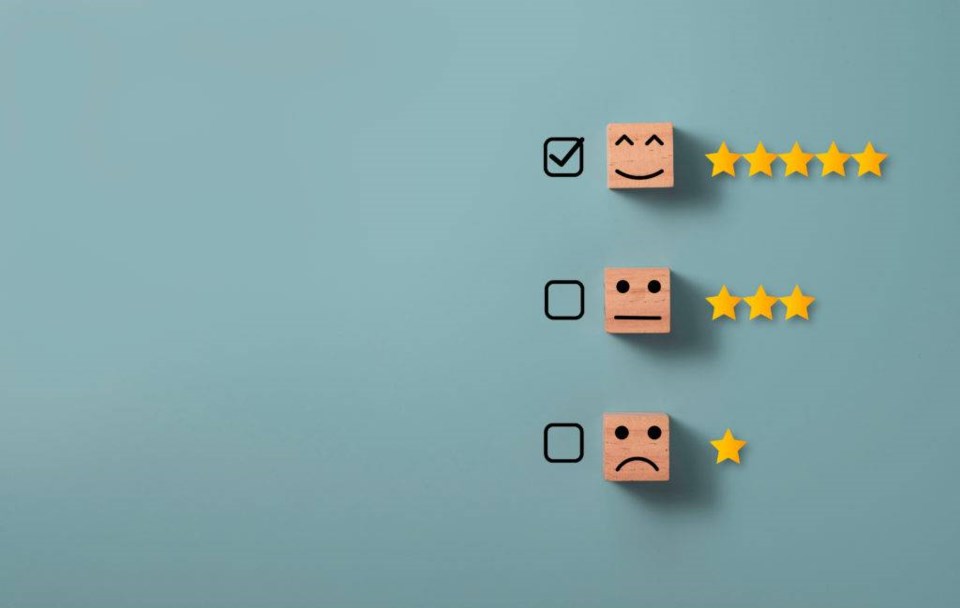
Ranked-choice voting, which began with a special election in January, allows people to rank up to five candidates in order of preference.
Going forward, Brooklynites will encounter this method, used in San Francisco and several other locations, to pick their favorite primary candidates for mayor, public advocate, comptroller, borough president and City Council.
How to mark ranked-choice ballots
Voters will see a row of candidates and a column of numbers, from one to five, on their ballot.
People can select their favorite candidate by filling in the oval next to the candidate's name under column 1. If voters have a second choice, do the same next to that candidate's name under column 2, and so on, through to their fifth choice.
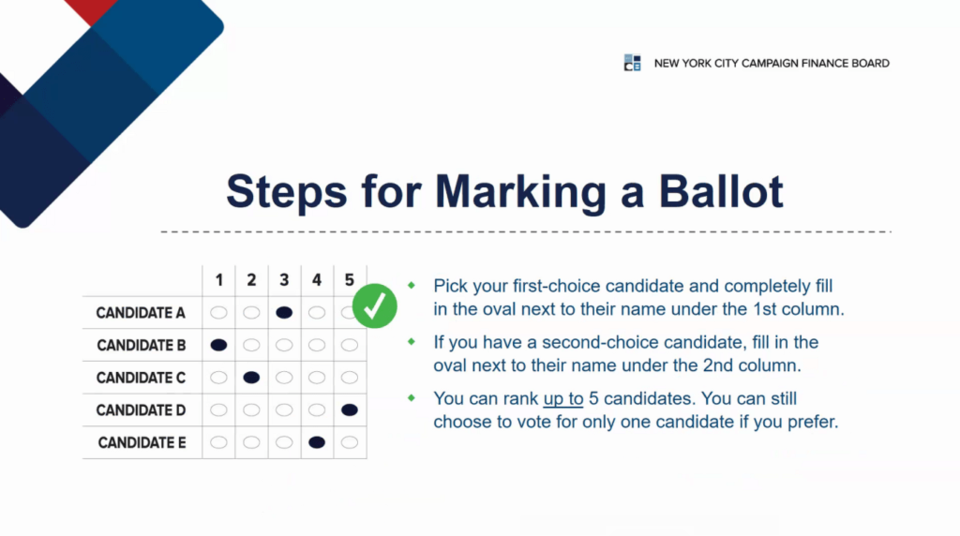
Voters are not required to pick five candidates. They can select just one candidate as their to choice, as well as ranking two or three of their favorites, Allie Swatek, policy research director at the NYC Campaign Finance Board, explained.
She warned: "Do not vote for anyone you don't like because, the way rank-choice voting works, that candidate will get a vote at the end if one of your more favorite candidates is eliminated."
Mistakes to avoid: over voting and duplicate voting
Over voting occurs when someone gives the same rank to multiple candidates.
In the example below, the voter ranked candidates B and C as their first choice. It's unclear which candidate the voter intended to choose at their top selection. That could invalidate the ballot, Swatek stated.
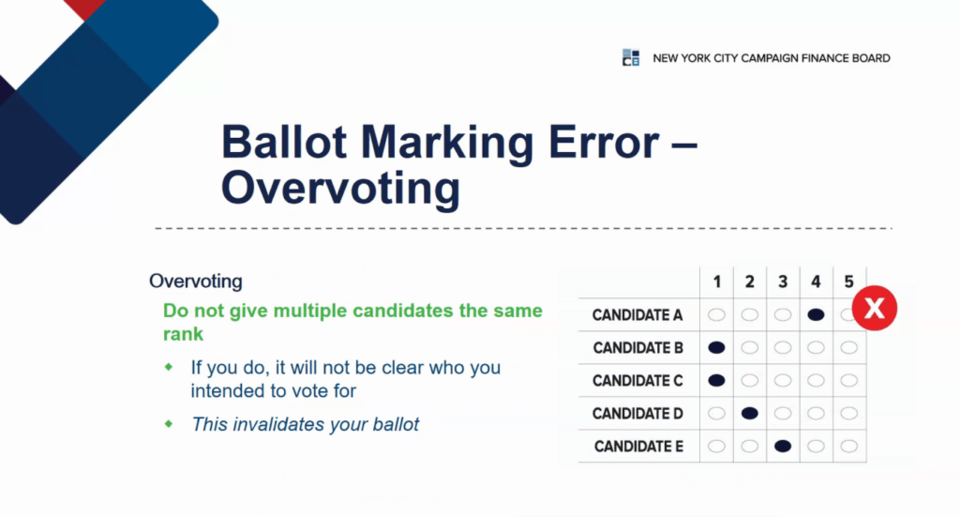
For in-person voters, that's not too much of a problem because the scanner will reject the ballot, and the voter could fill out another ballot.
Over voting creates more of a problem for mail-in ballot voters. Election officials will notify the voter, who must correct the error for their ballot to count.
Duplicate voting occurs when someone chooses a candidate more than once. It doesn't invalidate a ballot. However, it's a wasted vote.
Swatek said that there's no strategic benefit to giving the same candidate multiple rankings, for example ranking your preferred candidate as the first through fifth choice. It's the same as casting a single vote.
The Campaign Finance Board offers an online ranked-choice voting ballot for practice.
Counting votes
If one candidate gets more than 50% of first-choice votes, that candidate wins the election right away.
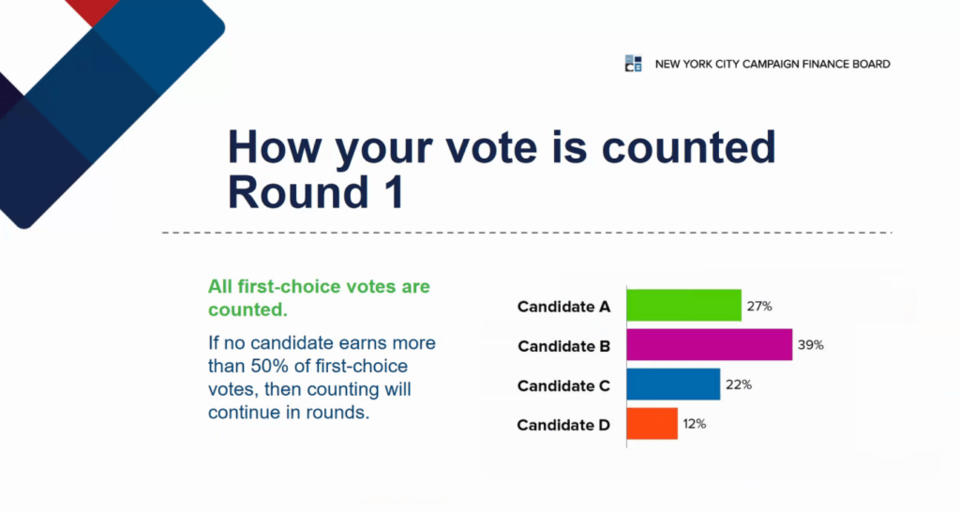
However, if no candidate gets more than 50% in the first round the person with the lowest number of first-choice votes is eliminated.
In the example above, candidate D would be eliminated and their votes redistributed to the second-choice candidates on D voters' ballots.
These rounds of elimination and redistribution of votes continue until only two candidates remain. At that point, the candidate with the most votes wins the election.
Swatek was optimistic when BK Reader asked whether officials have a way to gauge whether voters are aware of ranked-choice voting and how it works.
She said exit polls of 1,400 special election voters showed that 75% of them knew about ranked-choice voting before going to the polls. Data also showed that 95% of them found the ballot easy to use.
"We're legitimately curious to know if voters prefer ranked-choice voting," she said.
She added that results in some races may not be known on election night, as officials wait several days for mailed-in absentee ballots to arrive.

